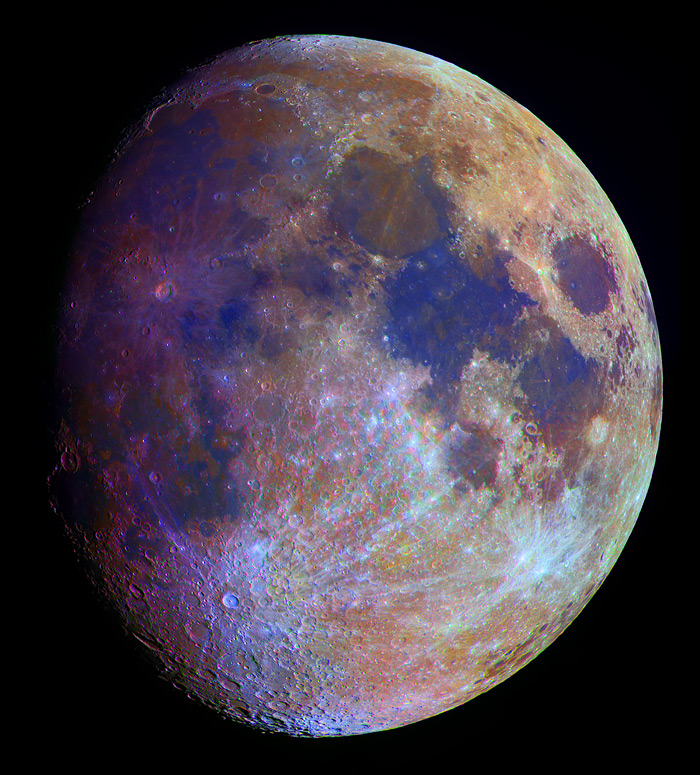|
We know the Moon to be nearly without visible color, except some silver or golden glow.
Yet the Moon actually exhibits very subtle color variation.
When we enhance the colors in an extreme way, we see dark blue maria, partly covered with brown areas, all in contrast with the bright sparkling highlands glowing from light blue to yellow.
Samples taken back from the Moon surface showed that most of these subtle color differences are due to compositional differences of surface materials.
For example, differences in color between basaltic flows may be due to the differing relative abundances of Iron and Titanium.
Also color of terrains may be due to differences in ages as there is a gradual darkening of the surface materials caused by bombardment of the Solar wind.
The highlands are made of light colored rock and are completely covered with overlapping impact craters, from tiny, hemispherical holes to gigantic, multi-ringed impact basins.
The large number of craters suggests that the highlands represent an ancient surface, roughly 4 billion years old.
Apollo 14, 15, 16, and 17, as well as Luna 20, sampled lunar highlands.
The maria appear to be dark deposits of a volcanic rock called basalt that fill many (but not all) of the impact basins on the lunar nearside.
Surprisingly, very few mare exist on the lunar farside. The maria are clearly younger than the highlands, because they fill parts of impact basins that formed in the highlands.
They are also clearly younger because their surfaces show many fewer impact craters than the highlands do. Apollo 11, 12, and 15, and Luna 16 and 24, sampled lunar maria.
Both the Galileo and Clementine spacecraft produced deep false color images that showed the distribution of different rock type.
In the image above i.e. blue maria areas show a high Titanium content, the light colored highlands are low in Iron and Titanium, brown colored maria are poor in the metals Titanium and Iron, fresh impact ejecta are nearly colorless.
Compare a high resolution image of the Plato area colorised with the data of the above image.
.
Links to more information:
Book: "Origin of the Moon" (electronically available): 1
Moonbeams and Elements: 2
The surprising Lunar Maria: 3
Lunar Geology and Vulcanism: 4
Geological surface data: 5
A procedure for color enhancement and map: 6
|
